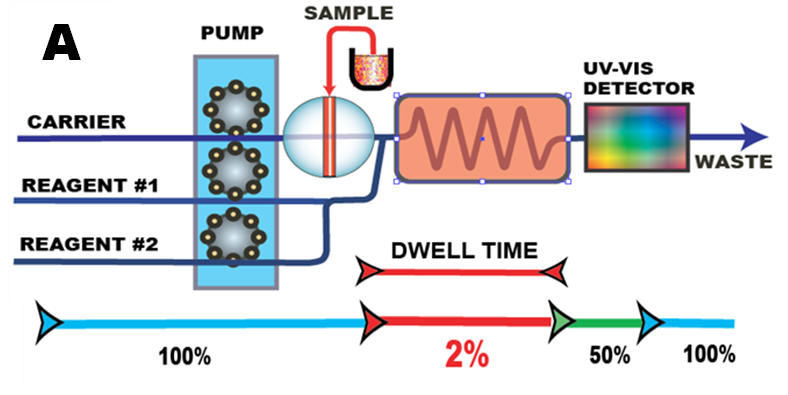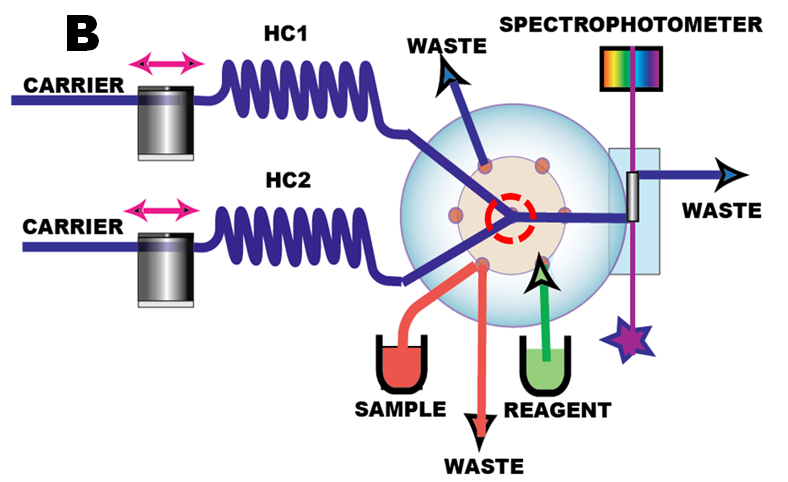Programmable Flow Injection: Forward or Reversed Flow
Flow programming can be carried out in Flow Injection format in two ways:
- By forward flow implemented at various flowrates (A)
- By reversed flow and forward flow implemented at various flowrates and combined with a stop flow in lab-on-valve format (B)
1.2.21.
The forward flow pFI is a modification of the traditional cFI technique enhanced by a suitable sequence of flowrates designed to optimize condition for individual steps of an assay (A). Thus the assay protocol begins by cleaning flow system by a high flowrate (100%), followed by very slow flow rate (2%) during DWELL TIME with aim to extend the incubation period of sample with reagents within the reaction coil. Next a moderate flow rate (50%) is implemented, while the sample passes through flow cell. The sampling cycle commences with a high flowrate right after the peak maximum is measured. The outcome is higher sensitivity of an assay, reduction of the volume of the generated waste, and higher efficiency of steps carried at slow flow dwell time. Forward flow pFI can be viewed as an straightforward upgrade of existing cFI method, since it can be implemented by using widely available equipment, that is suitable, as long as the pumps can be programmed to generate desirable flowrates. Examples of assays that can be used as templates are pFI method for phosphate (1.2.22.) and gas diffusion based method for ammonia (1.2.23.)
The miniaturized pFI is a microfluidic technique inspired by success of Sequential Injection, based on lab-on-valve platform (Chapter 2.). The miniaturized pFI uses the same equipment as miniaturized Sequential Injection, but unlike SI technique it includes the confluence point, located at the central port of the multiposition valve (B). In this way, sample zone is supplied, by reagent evenly along its entire length, while sample/reagent ratio is determined by flowrates of merging streams. To ensure thorough mixing, the merging streams are programmed to move the sample zone forth and back between holding coils (H1,H21), through the same confluence point (red circle).
As documented in (1.2.24.) and following sections, miniaturized pFI offers unprecedented versatility, it can automate a wide range of reagent based assays in microfluidic format and offers new ways in which reagent based assays can be automated.











